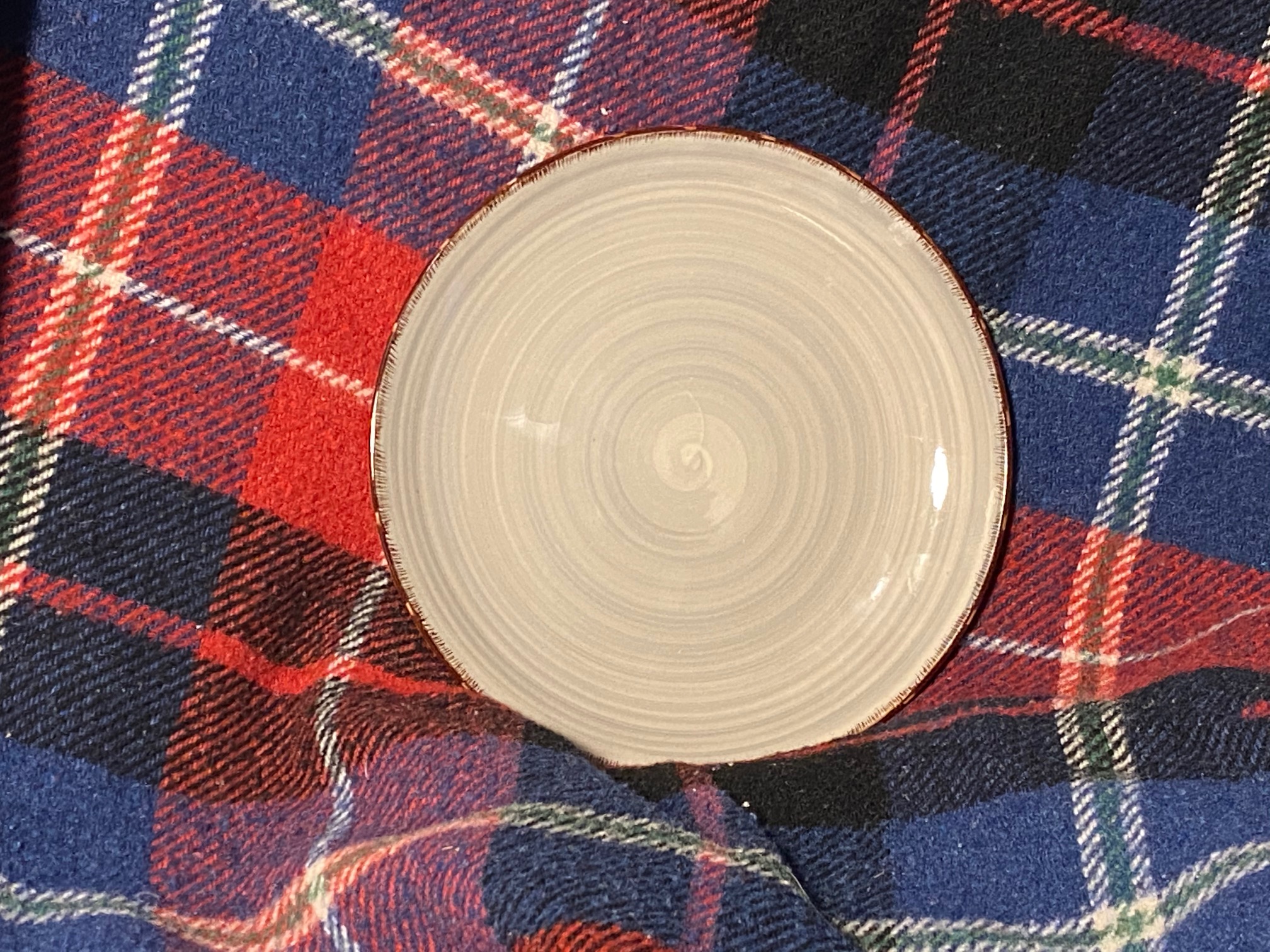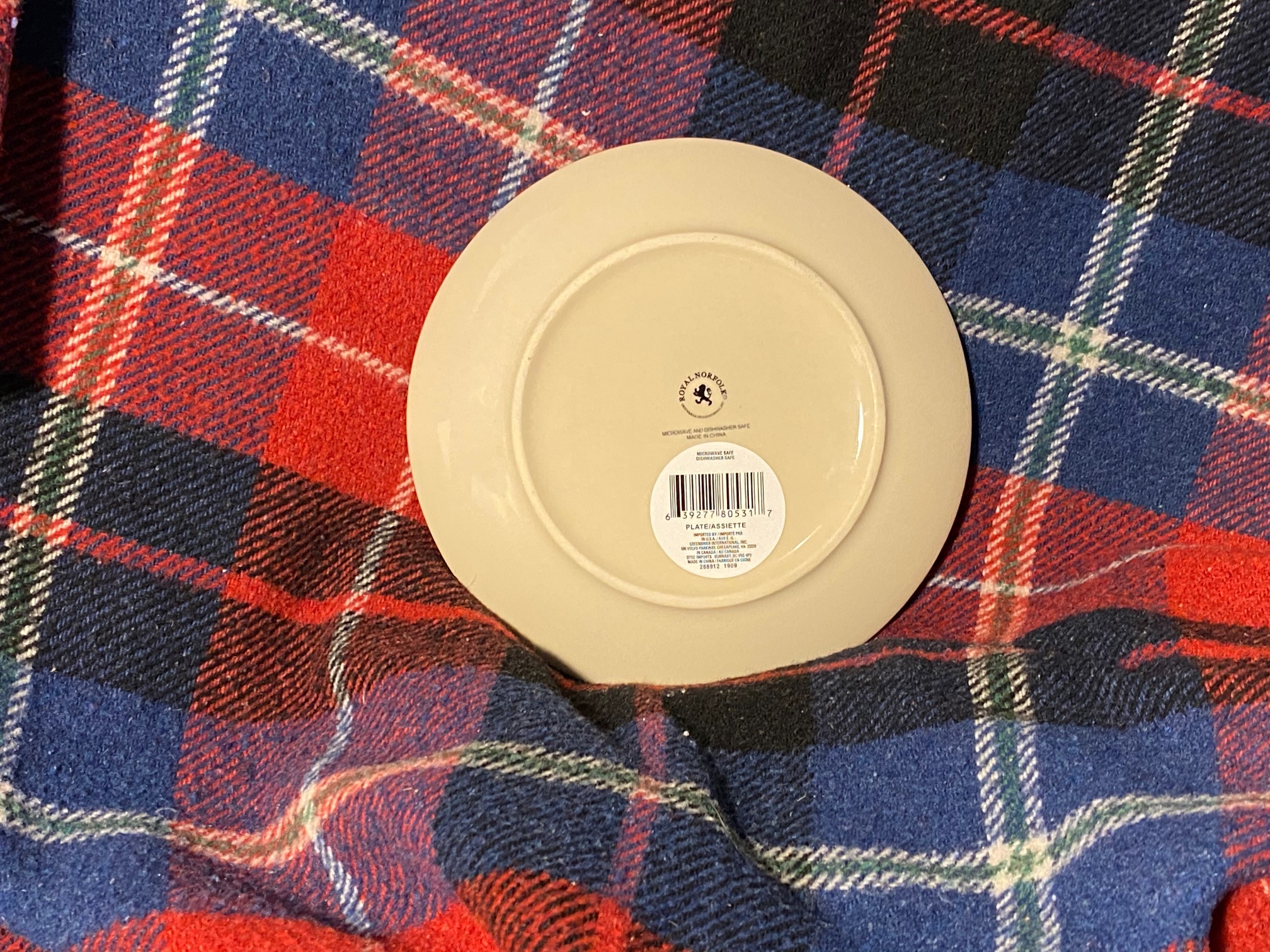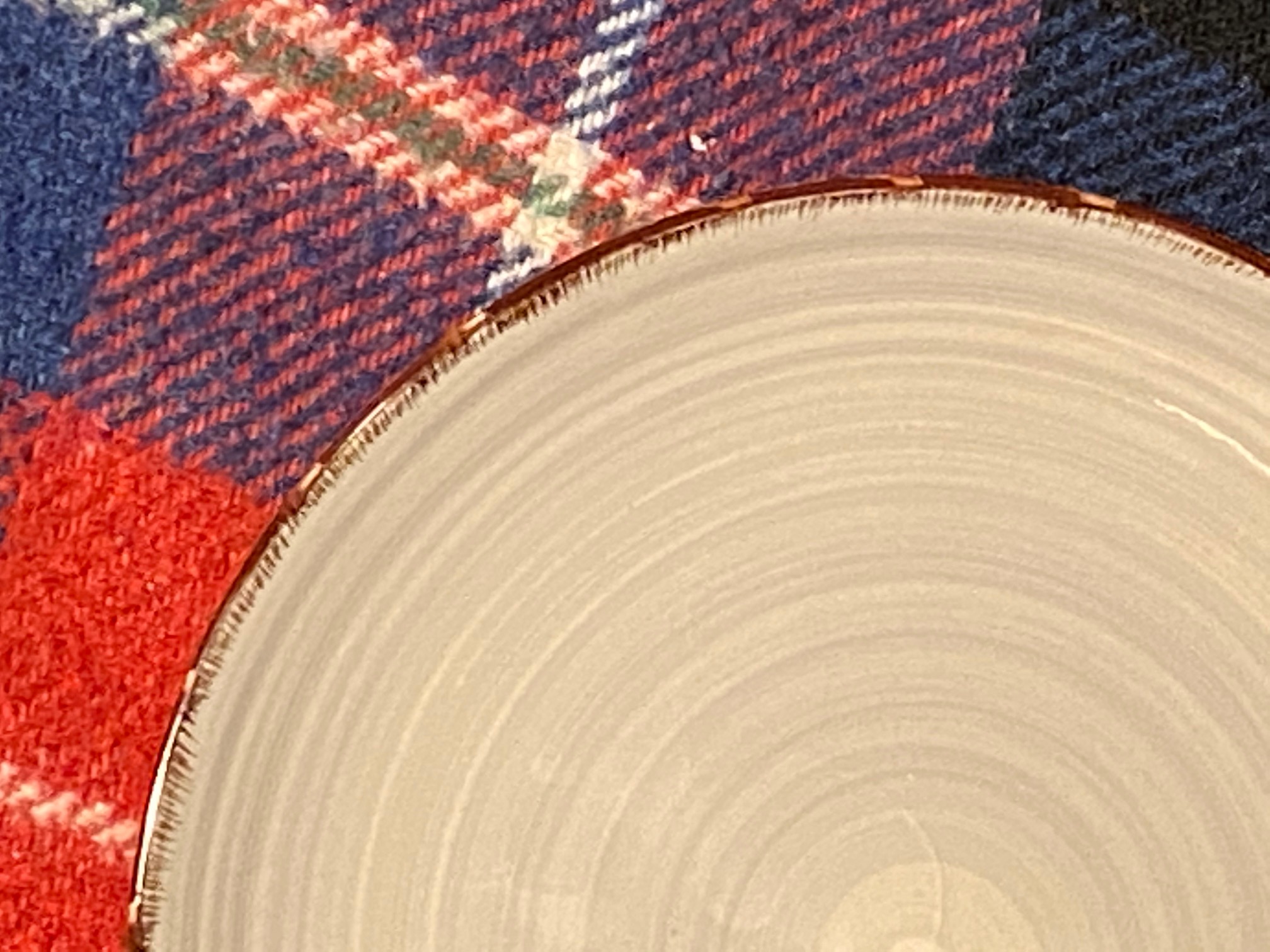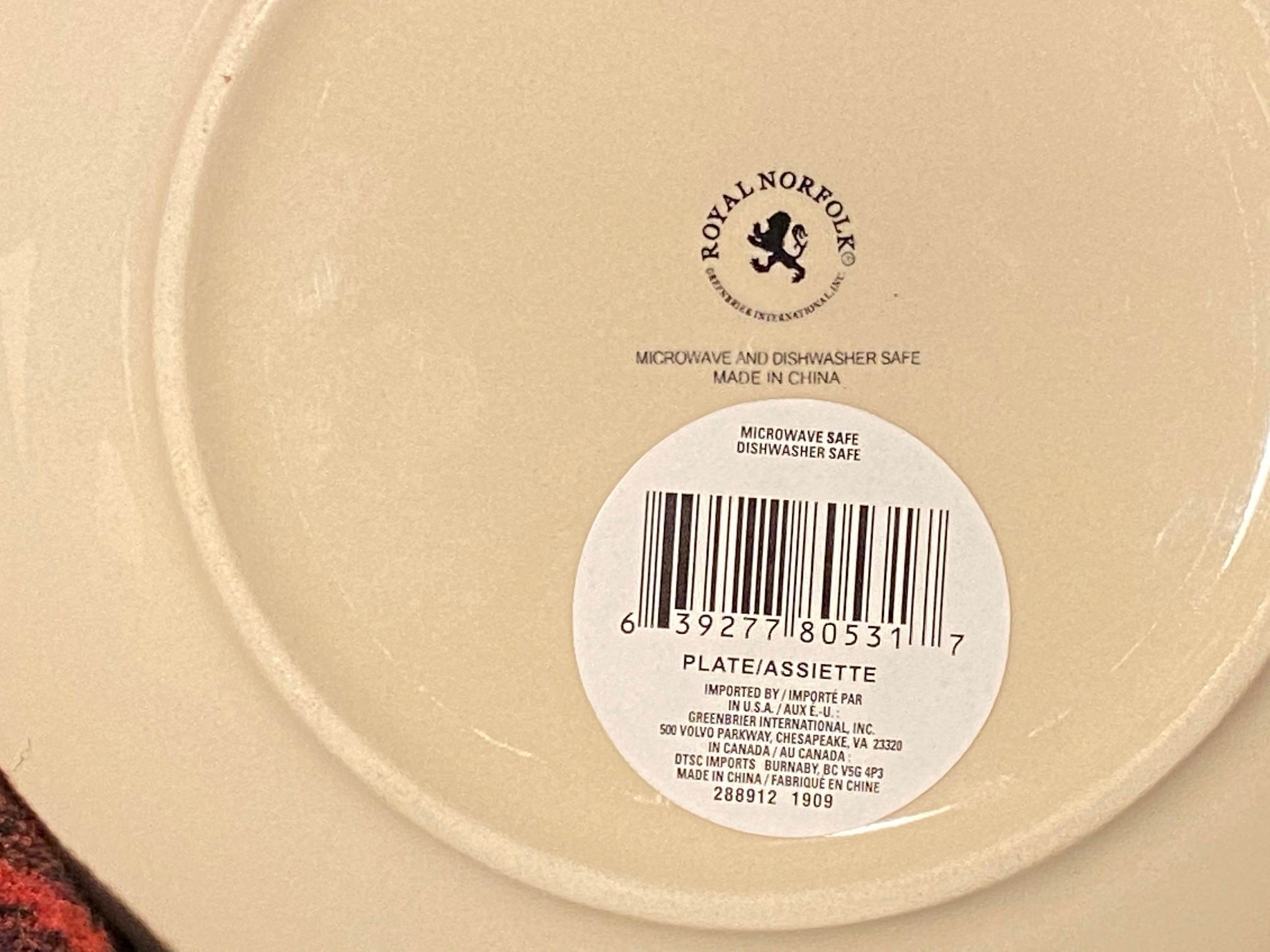Dollar Tree Store (Canada) Royal Norfolk gray, cream & brown ceramic dish: Lead-free, Cadmium-free, Arsenic-free!


Stay Safe Out There!
A quick note from Tamara
Hey readers – I hope you are staying well out there with all that is going on in the world right now. I’m hanging out mostly at home with my children – and have been doing so for more than three months now (since March 2nd.) Each of my three youngest sons (I have four sons total!) have compromised immune systems (which manifests in different ways for each of them), due to having been Lead-poisoned as babies.
In between kid-wrangling I am working hard to publish literally HUNDREDS of new posts (with test results for various consumer goods I have tested over the past couple of years, but have not yet had a moment to report on!). These posts have created a backlog in my system for more than a year now – and it’s actually nice to have a *break* with some time to catch up! To make this happen as quickly as possible, I am (as with this post) simply posting the images and the test results – without a lot of additional information. [Do not worry — I will continue to update them with more information as I get caught up and begin to have the time!]
For those new to my website, please check out the menu in the header of the website for more information about how I test things (and my background, etc.) On each post you can also click on any of the keyword tabs at the top of the post to find more items in that category. Here’s the post discussing the type of testing I do, and the specific instrument I use to detect, analyze and confirm metals content, and ultimately produce the resultant data for each item reported here – link.
Please Note: Test results reported below are science-based, accurate, and replicable. Test results reported here are from tests that were done for a minimum of 60 seconds each, and repeated multiple times, to confirm the results. As with all the testing reported here on my blog, a freshly-calibrated high-precision XRF instrument testing in Consumer Goods mode was used to test the item pictured here.
As always, please let me know if you have any questions.
Thank you for reading and for sharing my posts!
Tamara Rubin
#LeadSafeMama
#1) Gray center of plate
- Barium (Ba): 864 +/- 82 ppm
- Zinc (Zn): 11,000 +/- 500 ppm
- Iron (Fe): 1,893 +/- 344 ppm
- Vanadium (V): 2,613 +/- 245 ppm
- Titanium (Ti): 5,277 +/- 451 ppm
- Zirconium (Zr): 2,330 +/- 109 ppm
- Cobalt (Co): 296 +/- 154 ppm
#2) Brown rim of plate
- Barium (Ba): 740 +/- 84 ppm
- Zinc (Zn): 10,400 +/- 600 ppm
- Nickel (Ni): 239 +/- 131 ppm
- Iron (Fe): 4,084 +/- 504 ppm
- Chromium (Cr): 1,191 +/- 177 ppm
- Vanadium (V): 2,181+/- 229 ppm
- Titanium (Ti): 4,848 +/- 443 ppm
- Zirconium (Zr): 4,757 +/- 223 ppm
- Cobalt (Co): 897 +/- 230 ppm
#3) Black back-mark of plate
- Barium (Ba): 854 +/- 51 ppm
- Zinc (Zn): 9,077+/- 307 ppm
- Nickel (Ni): 215 +/- 77 ppm
- Iron (Fe): 2,542 +/- 252 ppm
- Vanadium (V): 2,481 +/- 215 ppm
- Titanium (Ti): 5,264 +/- 383 ppm
- Platinum (Pt): 122 +/- 74 ppm
- Cobalt (Co): 794 +/- 129 ppm
#4) Tan back area of plate
- Barium (Ba): 672 +/- 72 ppm
- Zinc (Zn): 8,952+/- 467 ppm
- Copper (Cu): 114 +/- 63 ppm
- Iron (Fe): 1,833 +/- 345 ppm
- Vanadium (V): 2,466 +/- 233 ppm
- Titanium (Ti): 5,025 +/- 432 ppm

Never Miss an Important Article Again!
Join our Email List




Have you ever tested these? I want to get them but I’m hesitant. How do you test your dishes I’ve looked at the swab sticks but many say they’re not for dishes.
https://www.dollartree.com/gray-marble-printed-stoneware-dinner-plates-105-in/318544
https://www.dollartree.com/marble-pattern-melamine-dinner-plates-105-in-/279962
Thanks!